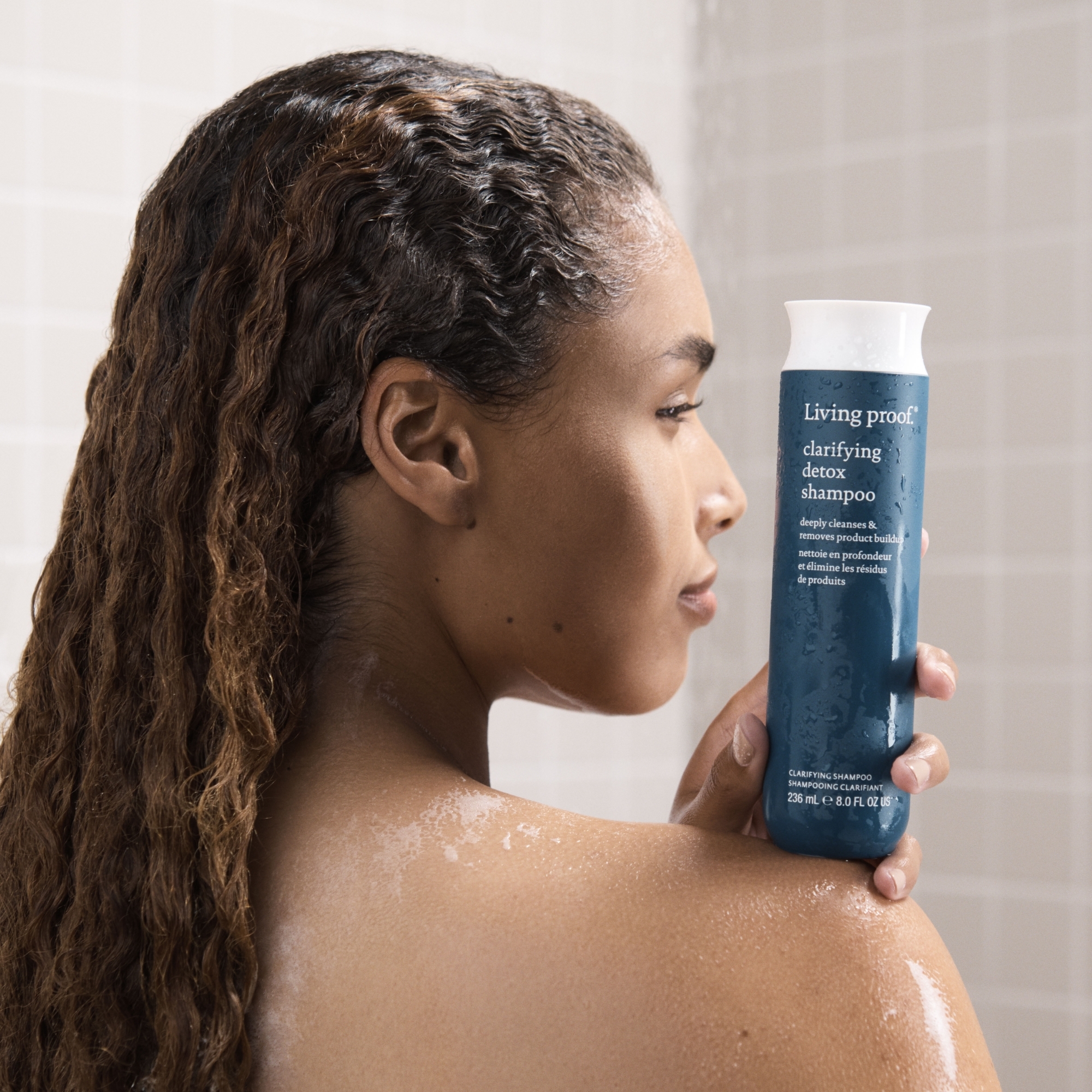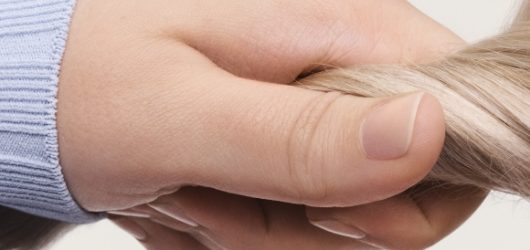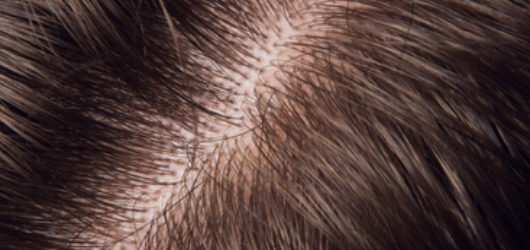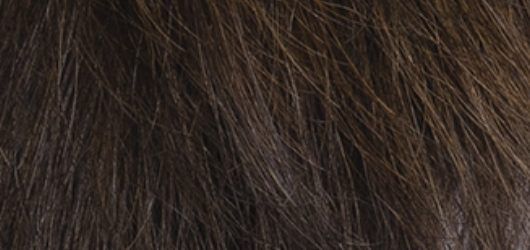
How to Protect Your Hair from Heat Damage
Whether you adore treating yourself to salon blowouts or you just need the blow dryer to get from the gym to the office by 9 am, using heat on your hair can feel indispensable to your everyday haircare routines.
Even so, the truth is that hot tools can do a number on our hair—both immediately and in the long term. Heat damage can have a visible effect on hair’s appearance and its overall vitality, which can lead to frizz, roughness, and an inability to retain moisture for a glossy, touchable feel.
Fortunately, there are some workarounds for preventing the heat damage wrought by our blow dryers and hot tools. Below, we put heat damaged hair under a microscope and outlined eight ways to protect your hair from heat, including one that allows you to still use heat — heat protectant spray.
#1 Assess Your Tresses
There’s nothing like breaking out your favorite heat styling tool to create a curly or sleek hair masterpiece—but sometimes, your hair simply can’t handle the heat.
Heat or thermal damage is primarily caused by:
- Solar radiation (sunlight)
- Traction caused by hair products
- Straightening irons
- Curling irons
- Blow dryers
If you already have hair damage, you might want to focus on restoring its shine before you turn to heat tools again.
So, how do you identify heat damage?
It’s important to note that every hair type and texture is unique, and not all hair that has sustained heat damage will exhibit the same signs of wear and tear. That said, there are some tell-tale signs to look for that may indicate your hair needs to recover from excessive heat use, including:
- Split ends
- Breakable hair
- Dryness or dullness
- Tangled, easily knotted hair
- Rough texture
The type or texture of your hair may play a role in how your locks react to the application of heat.
Fortunately, there are several ways to help reverse and prevent thermal damage.
#2 Limit Your Use of Hot Tools
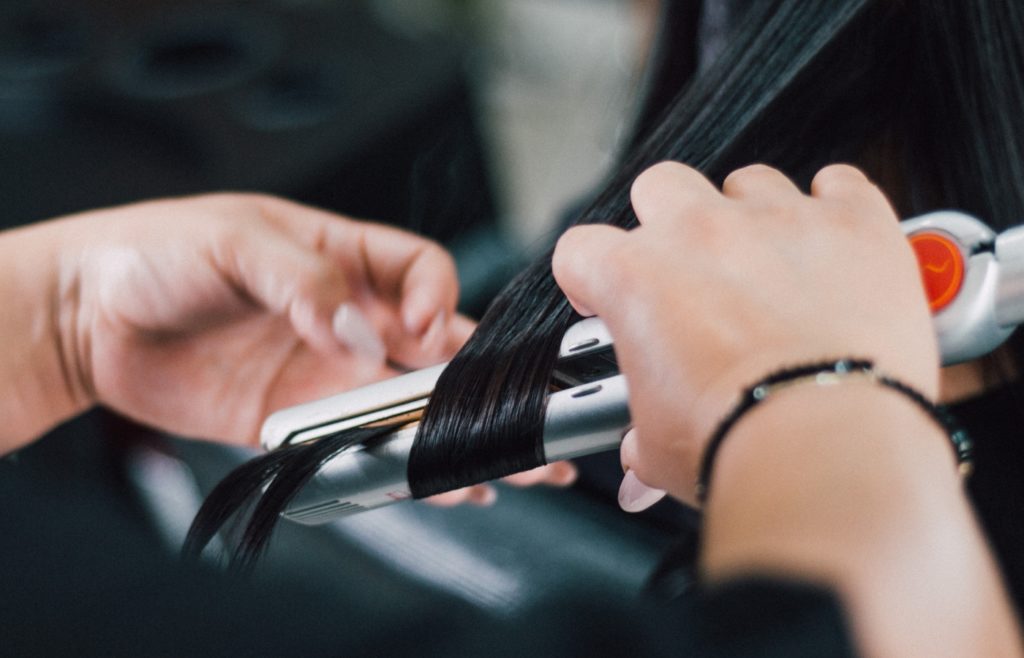
When used in excess, a heat styling tool can result in hair breakage and split ends. Therefore, it’s important to limit your use of heat and, when you use it, know how to wield it wisely. Even breaking out the flat iron once in a blue moon can cause immediate damage to the hair cuticle.
The cold, hard truth is that they’ll inevitably cause some damage to your locks. That said, if you love the glossy feel of a blowout or crave the romantic tendrils delivered by your curling iron, there are several other styling methods that don’t require heat. You can try:
- Velcro rollers
- Hair curling ribbons
- Wave rods
- Using the cool setting on your blow dryer
There’s no need to eliminate your heating tools entirely if they make you feel good. As long as you’re diligent about counteracting the damages, you should be able to enjoy them in moderation.
#3 Use a Heat Protectant Spray
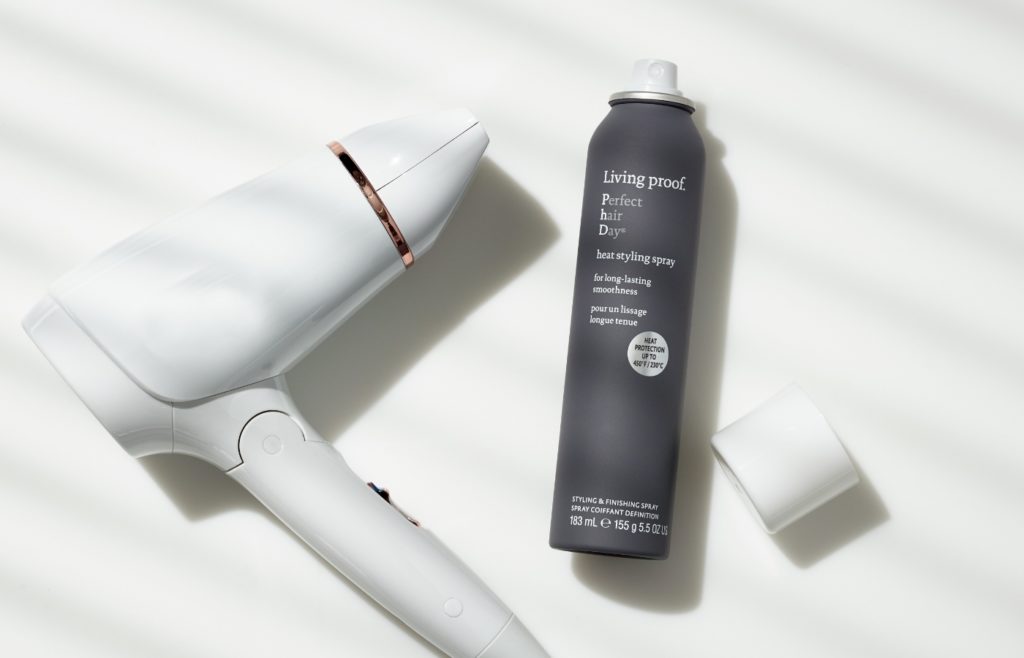
If your hair is regularly exposed to heat, consider trying a heat protectant product that can help your hair survive and thrive.
Many heat protectants on the market use silicones, which impart an immediate slippery feeling to hair but can leave strands parched, weighed down, and dull in the long run. Look for formulas that are:
- Silicone-free
- Moisture-rich
- Alcohol-based vs. water-based
Living Proof’s Perfect Hair Day Heat Styling Spray is both a dry and silicone-free solution. It finely mists hair to provide heat protection to each section of your tresses—and it’s formulated to help keep hair clean and freshly styled for longer. Translation? You won’t need to break out the blow dryer as often in the first place.
#4 Learn the Right Techniques
While allowing your hair to dry naturally is the best way to avoid heat damage, you can minimize hair damage by using the right techniques when you break out the blow dryer.
In one study assessing heat’s impact on hair structure, hydration, and color, people who used a hairdryer for 1 minute from 15 centimeters away saw far less damage to their hair than people who used it for 30 seconds from a 10-centimeter distance.
Wondering how to prevent heat damage on hair while using hot tools? Blasting a blow dryer at a distant range has a lower impact on hair’s appearance, moisture levels, and health long-term.
#5 Minimize Heat on Wet or Damp Hair
While you can use a blow dryer on damp or towel-dried hair, it’s not recommended to use one on soaking wet hair. When it comes to other heating tools like straightening irons or curlers, avoid touching them to wet or damp hair. Even though the sizzling steam may be satisfying to hear from using these tools on shower-fresh hair, it’s not a welcome sound from the perspective of your tresses.
Taking your hair from wet to dry rapidly rushes the water evaporation process and can lead to what hair researchers refer to as “bubble hair.” Bubble hair refers to the formation of microscopic pockets of air within the hair shaft. These put pressure on the hair’s chemical and physical structure. To the naked eye, bubble hair may look brittle and wiry.
Bubble hair is primarily caused by treating wet or damp hair with:
- Blow dryers
- Flat irons
- Curling irons
The best way to mellow this harshness to your hair shaft is to blow dry your locks before taking a hair straightener to them—yes, even if you’re using a heat protectant.
#6 Limit Your Sun Exposure
Thermal damaged and sun damaged hair aren’t identical in the world of hair research, but they can both have damaging effects on the look and quality of hair.
While directly applying heat to your hair tends to yield acute adverse effects on hair structure, sun exposure tends to break down the hair proteins that give hair its strength, which can lead to weakness, breakage, and limpness.
To counteract the effects of the sun, you can:
- Cover up – Wear a sun hat, bandana, or scarf (very chic).
- Steal some shade – Avoid going lengthy periods in direct sunlight, or alternate long periods outdoors with some time spent in the shade.
- Use UV protection – Incorporate a finishing spray formulated with UV protection for hair as a final step in your routine to block sunlight and keep your tresses looking polished and perfected.
#7 Use Moisturizing Masks
When hair sustains heat damage, the cuticle becomes much rougher, porous, and unable to retain and absorb moisture.
To repair damage and restore luster from the inside out, it’s essential to lean on products that can heal the hair’s barrier function. Reparative leave-in conditioners can work wonders for calming and smoothing out the cuticle on the go when you don’t have time to indulge in a lengthy hair mask. Or, nourish your locks and fortify your hair barrier by making deep or overnight conditioning treatments a part of your weekly haircare ritual.
Deep conditioning treatments like Living Proof’s Intense Moisture Mask are formulated to reduce the visible effects of heat damage immediately and help rebuild the internal structure of the hair.
For more intensive repair, try using a weekly bond builder. Our Triple Bond Complex is scientifically proven to make hair 8x stronger* and more resistant to future damage while adding softness, smoothness, shine and manageability.
#8 Cut Your Hair Often
No matter how much heat damage your hair has sustained, there is always an opportunity for repair because of your hair’s natural ability to grow.
One of the easiest ways to minimize excessive damage and breakability of heat-damaged hair is to make regular trips to the salon for a haircut. Precisely how often to pay a visit to your stylist varies according to your hair type, texture, and length. The golden rule is to book an appointment as soon as you start to notice split ends or breakability.
Remember—the quicker you lop off brittle and damaged hair, the easier it will be to wipe the slate clean and nourish it by incorporating the best products and practices into your haircare routine. Your hair will thank you.
Foster Healthier Hair with Living Proof
Learning how to tell if your hair is healthy and protected from heat damage is a matter of two main factors: your haircare habits and the products in your arsenal.
Living Proof’s haircare products online takes a deeper look at the bio-science of hair to zero in on the molecules it craves to ward off damage caused by heat and restore its function. Rather than riding the coattails of beauty industry trends, we’re more interested in getting to know the precise formula hair craves and putting it into practice—or, in our case, the bottle. Take our haircare quiz today to find out what’s best for your hair.
For heat protectants, deep conditioners, and a holistic collection of science-backed haircare products that takes your hair’s health to heart, shop the full range in the Living Proof shop.
- National Library of Medicine. Hair Styling Procedures and Hair Morphology: A Clinico-Microscopic Comparison Study. https://www.ncbi.nlm.nih.gov/pmc/articles/PMC7413455/
- Journal of Cosmetic Science. The effects of water on heat-styling damage. https://library.scconline.org/v062n01/25
- National Library of Medicine. Hair Shaft Damage from Heat and Drying Time of Hair Dryer.https://www.ncbi.nlm.nih.gov/pmc/articles/PMC3229938/
- National Library of Medicine. The effects of water on heat-styling damage.https://pubmed.ncbi.nlm.nih.gov/21443842/
- National Library of Medicine. Bubble Hair and Other Acquired Hair Shaft Anomalies due to Hot Ironing on Wet Hair. https://www.ncbi.nlm.nih.gov/pmc/articles/PMC3250009/
- National Library of Medicine. Hair Styling Procedures and Hair Morphology: A Clinico-Microscopic Comparison Study.https://www.ncbi.nlm.nih.gov/pmc/articles/PMC7413455/

